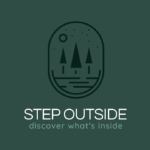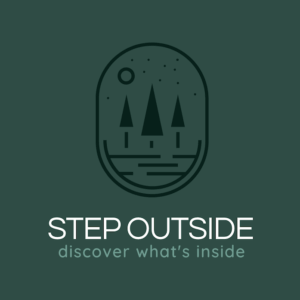October Member of the Month: Step Outside

 Each month, the Austin Young Chamber will highlight a member who is doing extraordinary work to strengthen our businesses, our community…or both! Showcasing their achievements is just one way we can put a spotlight on the talented, collaborative, and community-focused workforce we have here in Central Texas.
Each month, the Austin Young Chamber will highlight a member who is doing extraordinary work to strengthen our businesses, our community…or both! Showcasing their achievements is just one way we can put a spotlight on the talented, collaborative, and community-focused workforce we have here in Central Texas.
This month we’re highlighting Step Outside – an AYC Corporate Member and business who builds more adaptable and inspired teams through outdoor experiences that focus on developing emotional intelligence and values-based communication. We talked with Marc McCann, Founder & CEO, about what they’re up to and how you can get your own workplace to “Step Outside”!
AYC: How did you develop the idea or concept of your business? Tell us a little about your journey towards the creation of Step Outside.
Marc: The idea for Step Outside started from my time in the classroom. Tragically, the community that I taught in lost ten students to suicide over my four years teaching. During those experiences I realized how many of us, students and adults alike, need more effective tools to navigate our emotions and experiences.
At the time, I didn’t have those tools, so I spent the next several years personally researching and practicing methods that were both effective and evidence-based. All of this learning happened while I was transitioning professionally to a role in a high-growth startup. During my five years managing and leading teams at NoRedInk, I was grateful to realize that the same skills I’d been learning independently were also key ingredients to building highly engaged, productive, and collaborative teams.
As a result, I started piecing together the content for Step Outside — designing outdoor workshops that enhance emotional intelligence and values-based communication. Right now, our programs focus on getting teams outside to participate in activities that encourage greater self-awareness through physical movement (e.g. hiking, yoga, climbing, kayaking). We pair those activities with a curriculum based in emotion and behavior science to help individuals better understand themselves and how they interact within groups.
AYC: What is a consistent growth opportunity that you have noticed amongst the Austin workforce?
Marc: It’s hard to generalize opportunities for the Austin workforce given the diversity of roles, responsibilities, and industries represented throughout the city. That said, the pandemic has made it increasingly difficult for many of us to maintain a real sense of connection and belonging with our coworkers over the last 18 months. Many companies, faced with increasing burnout and turnover (what’s being called the Great Resignation), are having to rethink how to best support their employees. Surveys are showing that flexibility, ongoing investment in professional growth, and humanity in the workplace are top priorities for employees. I believe that leaders who listen closely to their employees’ needs and respond empathetically will be best equipped to address those needs.
AYC: What do you see as the greatest strength within the Austin workforce?
Marc: Austin’s welcoming and “weird” culture is what makes this city special. While certainly imperfect, ATX aspires to be unique, inclusive, and innovative. The people who live here (i.e. the workforce) have the largest influence in determining whether we live up to those aspirations. To build workplaces that work for all of us, we need individual employees to share their creative energy and thoughtful ideas with leaders who listen closely and are open to new ways of working.
In short, I think we need to lean on the characteristics (i.e. welcoming, whole-hearted, warm) that have made Austin successful and integrate those traits into the future of our work.
AYC: How does utilizing outdoor programming benefit teams better than indoor ones?
Marc: Over the past decade, research has shown that time spent in nature decreases stress, increases creativity, improves collaboration, and restores attention fatigue from time spent on screens. Beyond those clear benefits, new environments disrupt the unconscious, routine habits that we’ve built over time. Stepping out of these routines opens up new ways of thinking about ourselves and our experiences. When we self-reflect in a new setting, we can consciously decide which habits are working for us and which we’d like to change. From there, we can design small practices for ourselves to try out when we return to our typical environments.
That said, it’s easy to fall back into our typical routines without sustained effort. That’s why Step Outside provides follow-up coaching and support between our workshops to help individuals and teams actually follow through with the changes that they identified outdoors.


